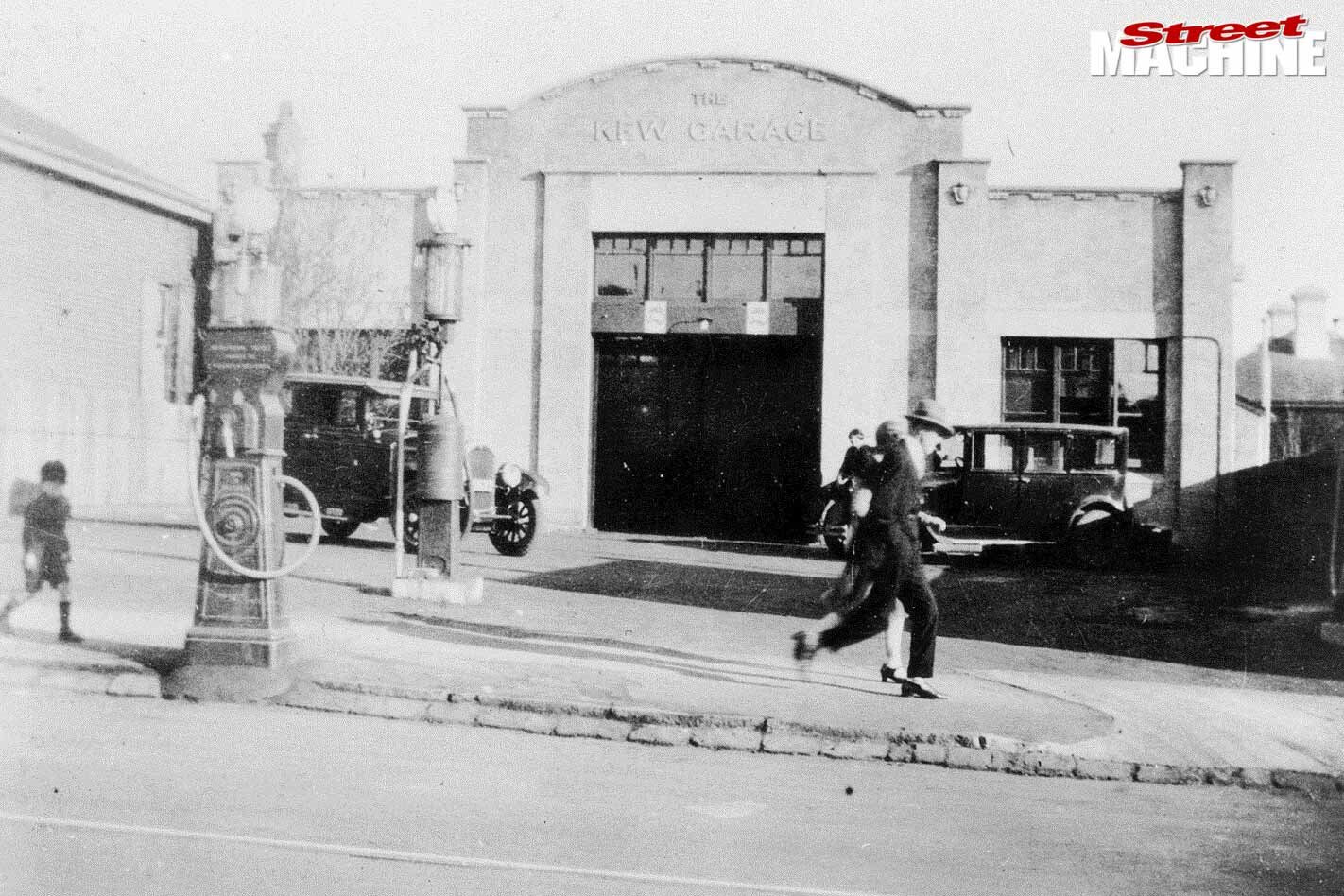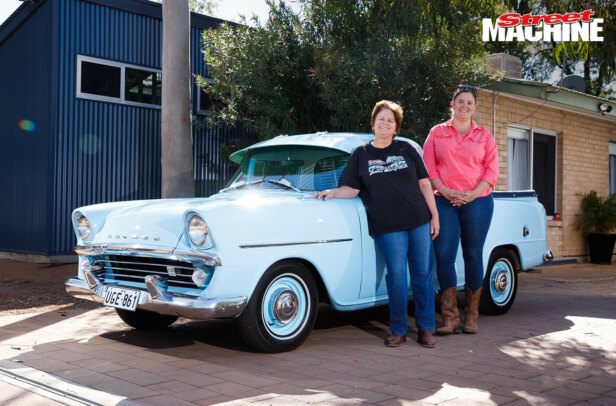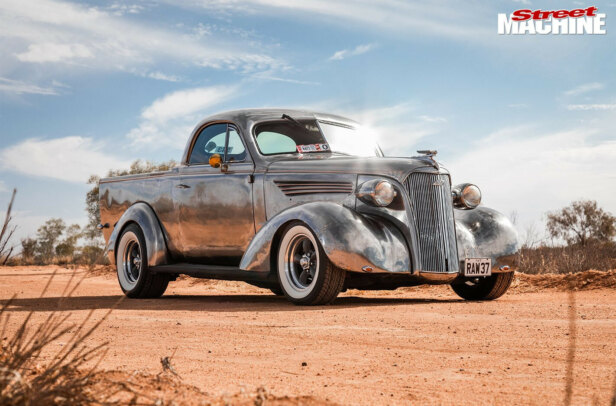IN THE early years of last century, Alice Anderson had a pioneering vision: to turn the mechanics trade into an accepted and aspirational career choice for women.
Born in 1897 in Melbourne, by age 20 Alice was working as a chauffeur and began running an auto workshop from the back of a house in Kew. Two years later, Alice established the country’s first all-female workshop, the personally designed, Art Deco-fronted Kew Garage. All of this at a mere 22 years of age!
This article was first published in the June 2019 issue of Street Machine
Alice working at the lathe, something expected of all of the Garage Girls. Making parts and brackets was commonplace
Although her workload greatly increased as proprietor of Kew Garage, Alice continued her chauffer role and in turn created the ‘Radi-waiter’, a flask that attached to the radiator, thereby keeping the contents warm. This way her customers could enjoy a piping-hot cuppa or even a warm meal when they rocked up at their day-trip destinations.
Alice Anderson wearing a chauffeur uniform c.1918
In 1918 she created the ‘Get-Out and Get-Under’, a device used to roll oneself under a car. You might know it now as a Creeper. Unfortunately, Alice didn’t get the recognition she deserved for her innovation. A 1922 newspaper explained: “Owing to an oversight, Miss Anderson failed to patent this invention in America, and soon after it appeared in Melbourne she received a visit from a polite American, to whom she showed it. A few weeks afterwards American trade journals arrived in Australia advertising and lauding the ‘Creeper’, an exactly similar device to the ‘Get-Out and Get-Under’.”
Jessie Millar and two other Garage Girls getting about their daily routine in 1925. You can see the old lathe and other must-have tools such as anvils, hammers and the obligatory slab of redgum
A frustrating turn of events – not that it deterred her. Alice’s personal motto was ‘Qui ne risque rien n’a rien’, a French proverb basically meaning ‘nothing ventured, nothing gained’. Alice wore the saying on her tiepin and used it on her business cards, a nod to her heroine Joan of Arc.
In yet another Australian first, she offered Kew Garage customers the Once-Over car service, carried out in just one day. I bet that pissed off the competitors! Kew Garage also offered the usual petrol and repairs, as well as a 24-hour chauffeur service.
It may be grainy, yet there’s no doubt that this 1920 photo is of Alice’s invention, the Get-Out and Get-Under, or what we now know and love as the Creeper
On top of this, Alice educated women in what was a fairly new technology. Starting with driving classes, which included mechanical tutelage on demo motors, women could then pay a bit extra to work on their own car alongside the mechanics. Some carried on to become fully fledged ‘Garage Girls’.
Yet Alice set the bar high, preferring to train the well-educated. She was reported as saying: “I can train a girl to be a good driver in a year; but if a girl is to qualify as a thoroughly competent garage assistant she must be in a position to undertake any repairs and to make spare parts if necessary. This involves a working knowledge of mechanics, chemistry and trig – an eight-year course. My ambition is to turn a trade into a profession for women, and it is well within the grasp of those who have initiative and grit.”
Alice was taught how to drive and pull down an engine by her father and his garage staff in 1916. A year later she took on the “arduous and risky” postal round from Healesville over the perilous Black’s Spur to Marysville. In her spare time she chauffeured families on day trips to the countryside in her seven-seater 1917 Hupmobile. Alice’s chauffer uniform consisted of a thick coat, gloves and pants – unusual clothes for a woman in the 1920s
Grit was something Alice had in spades. In August 1926 she left her employees in charge of the garage to set out on an adventure, heading off in her brand-new ’26 Austin 7 on a treacherous trip from Melbourne to Alice Springs. While today we might debate taking our muscle cars on the sealed open highway to Red CentreNATS, back then it was unheard of. The Baby Austin was stripped of its doors, with a cross-brace to suffice; this in turn allowed for the weight of the necessary supplies needed for the successful return journey.
Can you imagine driving a 1926 Austin 7 on dirt and potholed outback trails? Alice did just that, successfully touring herself and friend Jessie Webb to Alice Springs
Tragically, only a few weeks later, on 17 September 1926, Alice’s life came to an abrupt end. She died in her garage of a gunshot wound to the forehead. It’s unknown whether it was an accidental injury while cleaning her guns, or perhaps murder, or even suicide. Sadly, we’ll never know exactly what happened to the 29-year-old, and can only imagine what else this incredibly ambitious and innovative woman may have achieved.
GARAGE GIRL
INTRIGUED by Alice and would like to know more? Historian and writer Loretta Smith has written Alice Anderson’s biography, A Spanner In The Works, recently published by Hachette. For more info head over to her ‘Alice Anderson Garage Girl’ Facebook page. And if you’re ever near Birdwood, SA, take a gander at the Alice Anderson exhibition at the National Motor Museum.
ACKNOWLEDGEMENTS:
Michelle Toft, curator at the National Motor Museum in Birdwood; Loretta Smith, historian and writer of the recently published Alice Anderson biography, A Spanner In The Works (Hachette); The Mercury newspaper 1922; The Age; Laura Doan & Jane Garrity (eds.): Sapphic Modernities: Sexuality, Women & National Culture (Palgrave Macmillan).




Comments